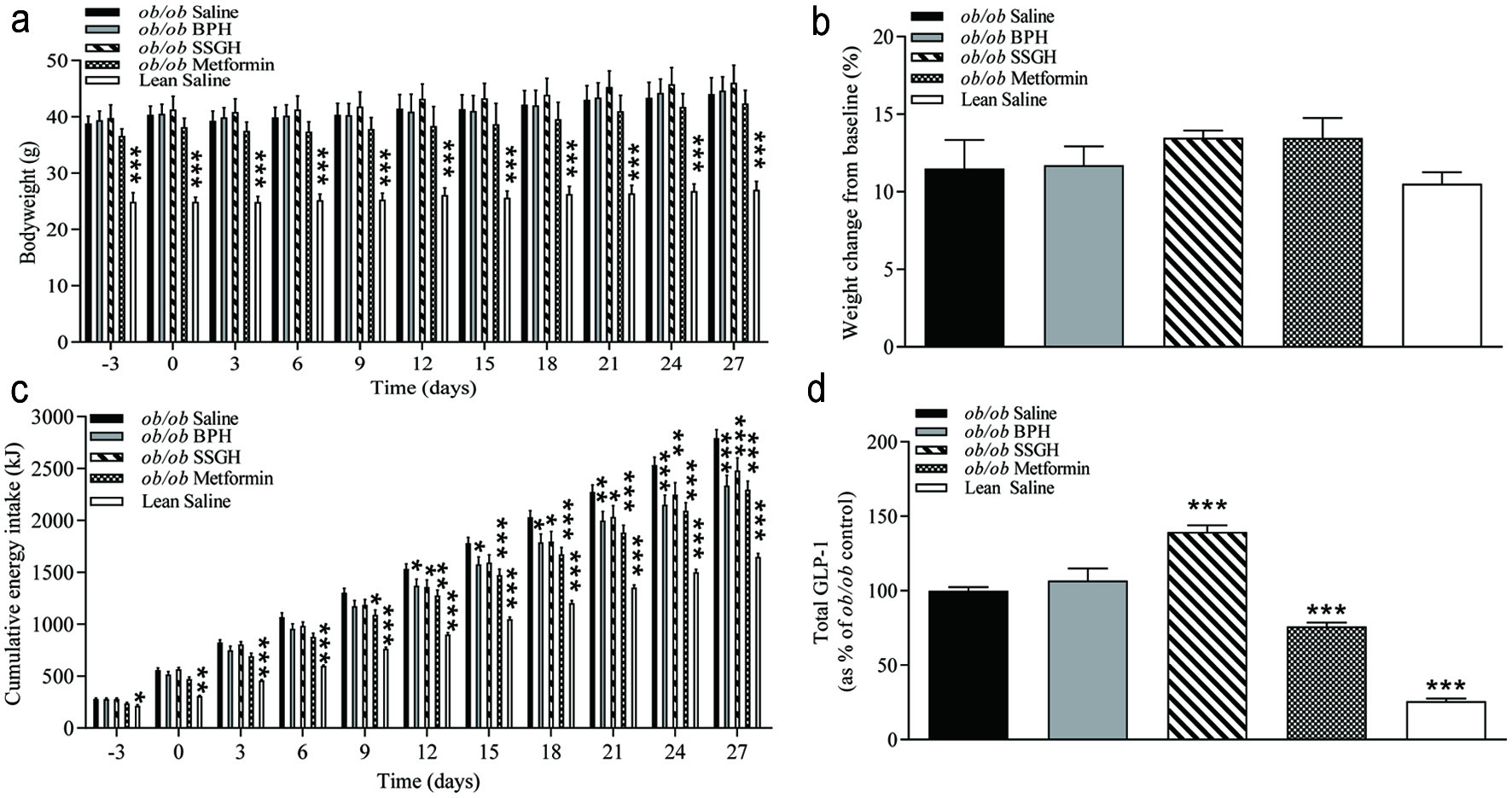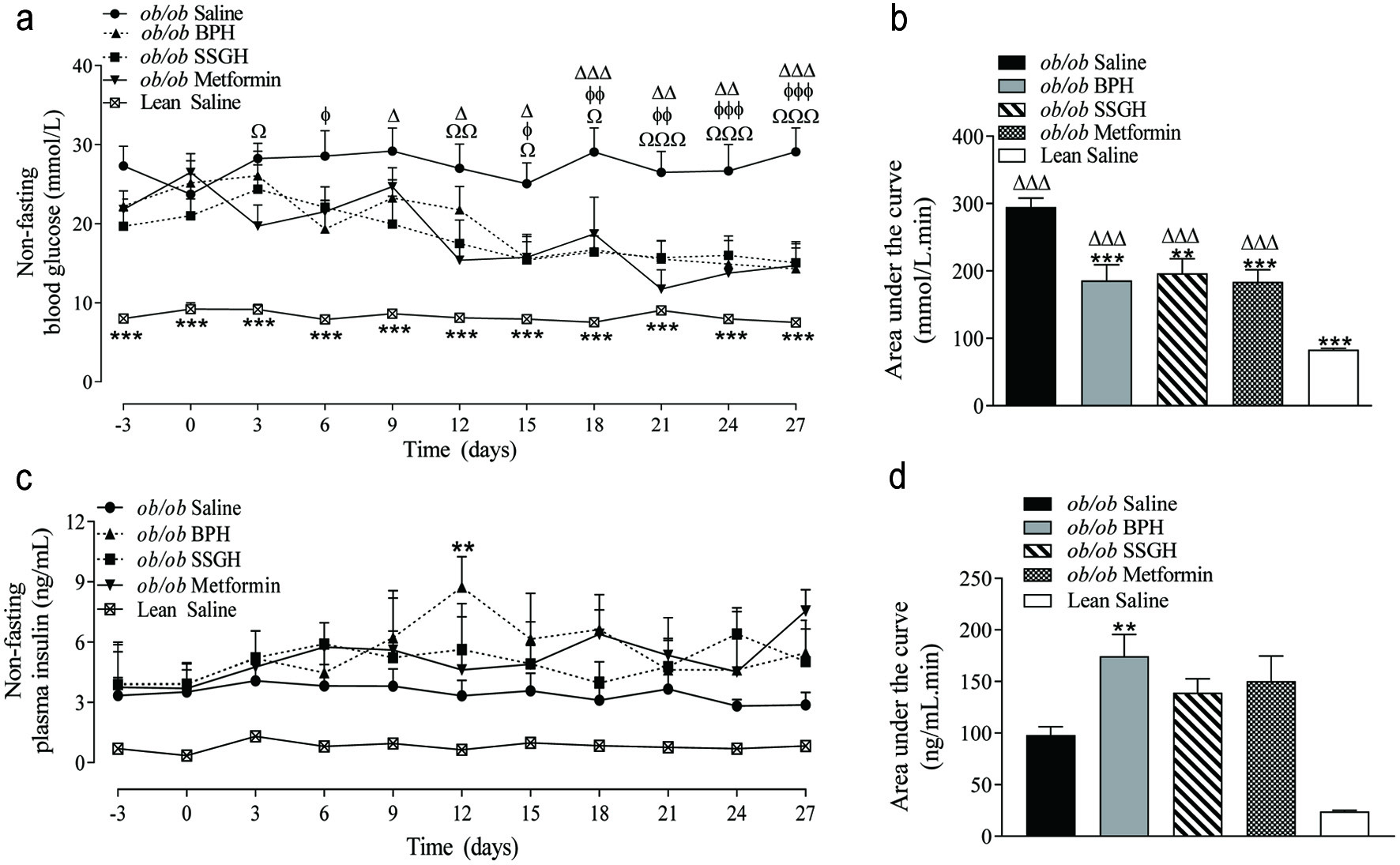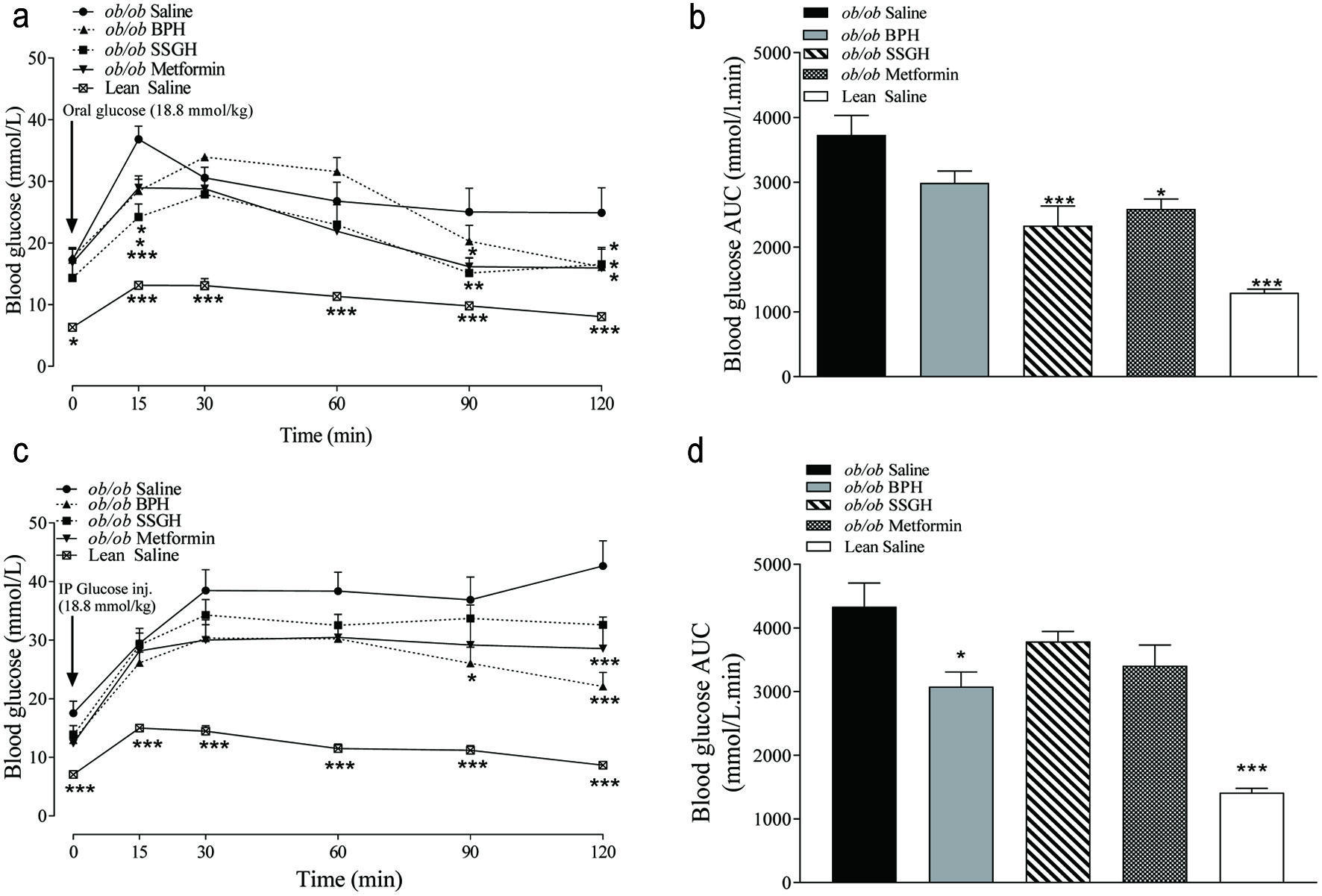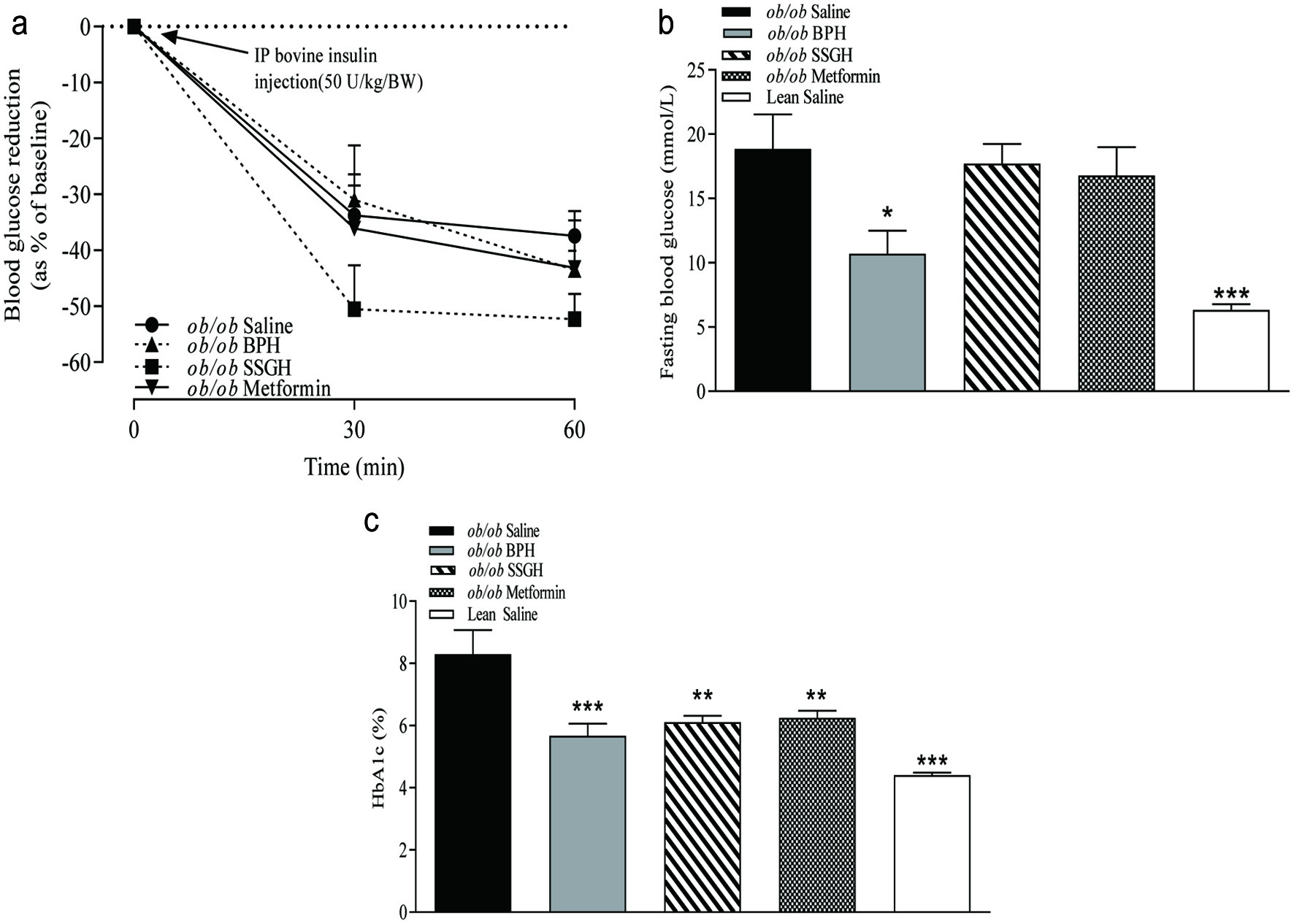Figures

Figure 1. The effect of fish hydrolysate treatment on (a) bodyweight, (b) weight change, (c) energy intake and (d) plasma total GLP-1. Mice were treated with hydrolysate (50 mg/kg bodyweight), saline, or metformin (200 mg/kg bodyweight) twice daily for 27 days. Values represent mean ± S.E.M. (n = 8). *p < 0.05, **p < 0.01, ***p < 0.001 versus (ob/ob) saline control. BPH: boarfish protein hydrolysate; SSGH: salmon skin gelatin hydrolysate; kJ: kilojoules.

Figure 2. The effect of fish hydrolysate treatment on (a) blood glucose and (c) plasma insulin, with (b, d) respective calculated area under the curve values. Mice were treated with hydrolysate (50 mg/kg bodyweight), saline, or metformin (200 mg/kg bodyweight) twice daily for 27 days. Values represent mean ± S.E.M. (n = 8). **p < 0.01, ***p < 0.001 versus (ob/ob) saline control. Ωp < 0.05, ΩΩp < 0.01, ΩΩΩp < 0.001 versus metformin. Δp < 0.05, ΔΔp < 0.01, ΔΔΔp < 0.001 versus SSGH. ɸp < 0.05, ɸɸp < 0.01, ɸɸɸp < 0.001 versus BPH. BPH: boarfish protein hydrolysate; SSGH: salmon skin gelatin hydrolysate.

Figure 3. The effect of fish hydrolysate treatment on postprandial glucose control following (a) orogastric and (c) intraperitoneal glucose administration, with (b, d) respective calculated area under the curve. Mice were treated with hydrolysate (50 mg/kg bodyweight), saline, or metformin (200 mg/kg bodyweight) twice daily for 27 days, with glucose tolerance testing performed thereafter. Values represent mean ± S.E.M. (n = 8). *p < 0.05, **p < 0.01, ***p < 0.001 versus (ob/ob) saline control. BPH: boarfish protein hydrolysate; SSGH: salmon skin gelatin hydrolysate.

Figure 4. The effect of fish hydrolysate treatment on (a) insulin sensitivity and (b) integrated area under the curve (AUC), (c) fasting blood glucose and (d) glycated haemoglobin (HbA1c). Mice were treated with hydrolysate (50 mg/kg bodyweight), saline, or metformin (200 mg/kg bodyweight) for 27 days. Insulin sensitivity was assessed following i.p. administration of bovine insulin (50 U/kg/BW; A). Fasting glucose and glycated haemoglobin were assessed following extraction of terminal whole blood samples (c, d)Values represent mean ± S.E.M. (n = 8). *p < 0.05, **p < 0.01, ***p < 0.001 versus (ob/ob) saline control. BPH: boarfish protein hydrolysate; SSGH: salmon skin gelatin hydrolysate.

Figure 5. The effect of fish hydrolysate treatment on (a) total plasma cholesterol, (b) plasma LDL, (c) plasma HDL and (d) plasma triglycerides. Mice were treated with hydrolysate (50 mg/kg bodyweight), saline, or metformin (200 mg/kg bodyweight) twice daily for 27 days. Terminal plasma was collected following the treatment period and stored at −20°C until required for lipid analysis by ILab 650 chemistry analyser (a–d). Values represent mean ± S.E.M. (n = 8). *p < 0.05, **p < 0.01, ***p < 0.001 versus ob/ob saline control. BPH: boarfish protein hydrolysate; SSGH: salmon skin gelatin hydrolysate.




